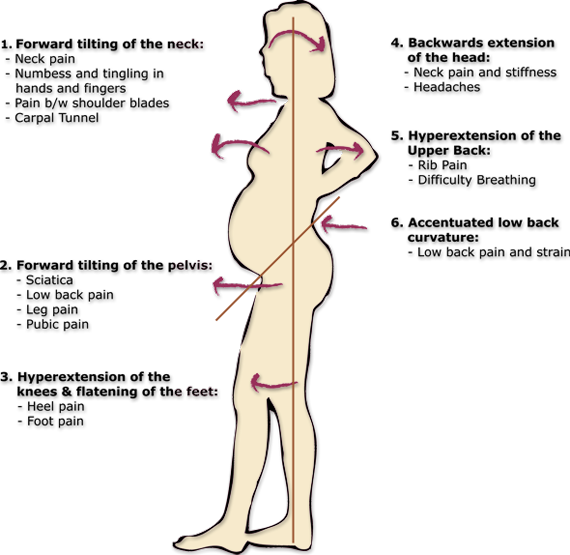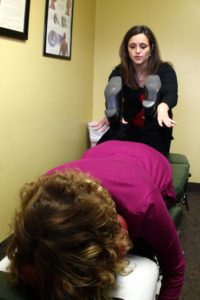Pregnancy & Webster Technique
Undergoing chiropractic care during your pregnancy is safe, gentle and effective for treating many of the physical complaints that a woman may experience during her pregnancy.
Due to the continuously changing biomechanics of a pregnant woman’s body, specific techniques and tools are used to ensure the safety, comfort and effectiveness of treatment.
The Webster Technique is a specific chiropractic analysis and adjustment to a woman’s pelvic region which reduces the interference to the nervous system and creates balance in the pelvic structures, muscles and ligaments. By reducing nervous system interference, improved function of the pelvic muscles and ligaments lead to the reduction of undue tension in the woman’s uterus. This may allow the baby to get into the best possible position for birth.
During pregnancy a hormone, called relaxin, which is released that relaxes your ligaments to allow for growth of the baby and opening of the mother’s pelvis. This may exaggerate the effects of an existing spinal or pelvic condition. The Webster Technique is used when a misaligned pelvis causes the tightening and torsion of specific pelvic muscles and ligaments. It is these tense muscles and ligaments which may prevent the baby from achieving the best possible position for birth. (For more information and research about the Webster Technique go to International Chiropractic Pediatric Association.)
Listed below are some of the benefits of having chiropractic care during your pregnancy, researched and identified by the International Chiropractic Pediatric Association.
- Chiropractic care throughout pregnancy can relieve and even prevent the common discomforts experienced in pregnancy.
- Doctors of chiropractic work specifically with your pelvis throughout pregnancy restoring a state of balance and creating an environment for an easier, quicker, safer delivery.
- Chiropractic adjustments reduce interference to the nervous system, allowing your body to function at its maximum potential.
- Chiropractic care is shown to reduce the need for pain medications and medical interventions.
Changing biomechanics of the body during pregnancy
The biomechanical changes of the spine that a woman’s body goes through during pregnancy can cause certain stressors in the body which can lead to pain or discomfort, explained as follows:

What to expect when having the Webster Technique:
Step 1
To assess for the Webster Technique, the pregnant woman will lay face down on a chiropractic exam table that releases for her belly with or without the use of pregnancy pillow(s) depending on the woman’s comfort and the doctors’ recommendations. There are different sizes to the pillows so as your pregnancy advances we can maintain your comfort.


Step 2
Once face down properly, and then both legs are flexed up to the buttocks to identify which side of the pelvis needs to be adjusted.

Step 3
To make the adjustment needed the pregnant woman will remain in a face down position on the adjusting table. The adjustment will be done by using a Drop Table Technique. A specific part of the lower part of the table is raised one inch and when the adjustment is made by the doctor the table will drop one inch to accentuate the gentle force the doctor uses. Then the doctor will recheck the area to confirm the adjustment was effective.


Step 4
Next, the pregnant woman will be asked to lay face up on the table. The doctor will then assess for round ligament tenderness and the required corrections are made with the gentlest techniques possible.

Step 5
Some women will also experience upper back and neck pain during their pregnancies due to the continuously changing biomechanics of the body as the pregnancy progresses. May women find much relief from having these areas treated by a chiropractor as well.


Symphasis Pubis Diastasis
Experiencing severe pain over your pubic bones that gradually increases and inhibits you from moving easily and even walking during your pregnancy could mean you have Symphasis Pubis Diastasis (SPD). SPD is an injury to the pubic symphasis sustained from a prior pregnancy during labor and delivery. This too can be easily managed with chiropractic care.
Post-pregnancy chiropractic care
Many women do experience various aches and pains along with general discomfort post-pregnancy. Due to the drastically changing biomechanics of the spine (explained above), sometimes a woman’s body has a hard time readjusting to these physical changes and therefore will feel achy, sore or pain even after labor and delivery.
Chiropractic care can help a woman’s body adjust quicker to these physical changes and alleviate the symptoms. For example, when a woman starts breastfeeding her upper back and neck are stressed and most women do experience discomfort in these areas of their spine from holding their baby properly to nurse.

30 weeks Pregnant on the Great Wall of China!
“All thanks to Dr. Clemente!”
